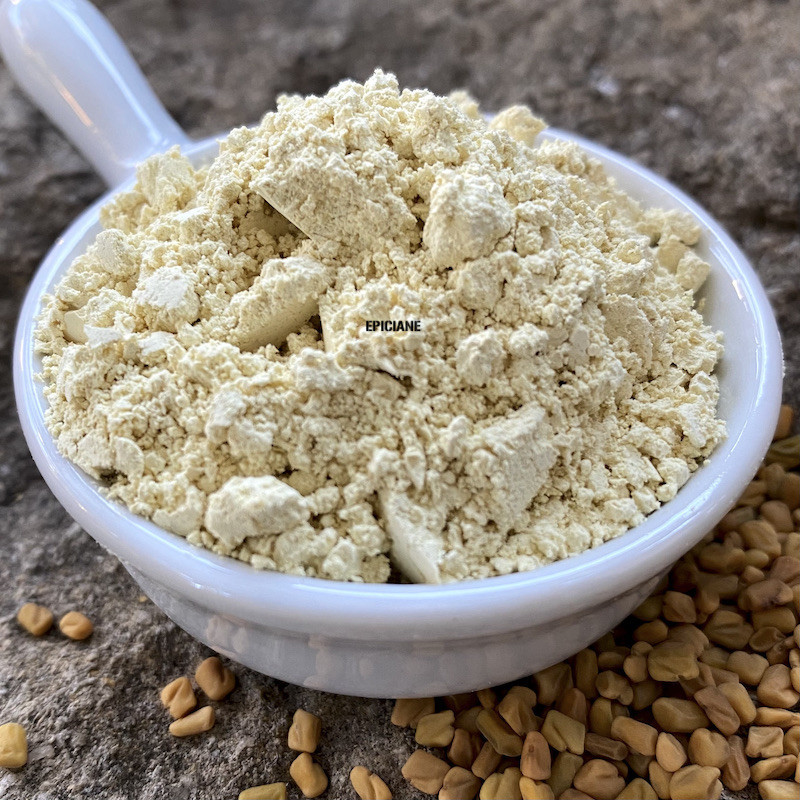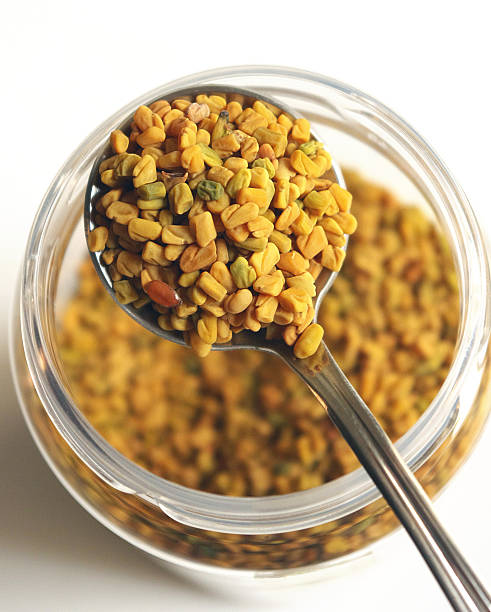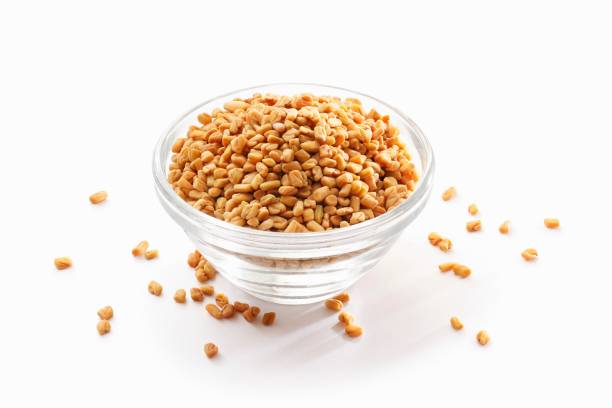
Reference: carrymadras


A fine powder with a cereal-like flavor and a touch of bitterness.
An essential ingredient in North African cuisine and a key component in numerous spice blends worldwide. Plus, it’s loaded with health benefits!
 Delivery
Delivery
Mondial Relay
 Returns
Returns
See conditions
 Payments
Payments
100% secure
Delivered in a resealable pouch
°°°
Also available as whole seeds, click here!
 Uses in Cooking:
Uses in Cooking:Fenugreek is widely used in many countries and is a key ingredient in numerous spice blends, where the seeds are often ground into powder: Indian curry, garam masala, North African ras-el-hanout, tajines, and Caribbean colombo. In these blends, its property as a "binding agent" in dishes is particularly valued. Fenugreek powder swells and softens when in contact with water or food.
Beyond culinary uses, fenugreek is also packed with health benefits.

Origin: India
Scientific name: Trigonella foenum-graecum
Other names: Sénégrain, trigonelle
Fenugreek has a distinctive, slightly "thick" aroma but is rich in health benefits. It contains high levels of iron, phosphorus, sulfur, and vitamins (A, B1). It also has steroidal saponins that support the synthesis of cholesterol and sex hormones.
Fenugreek may help with hyperglycemia in certain types of diabetes, lower cholesterol and triglycerides, and boost lactation in nursing mothers. Additionally, its carbohydrate-rich seeds are a natural fortifier.
To use fenugreek medicinally, you can consume crushed seeds or drink water infused with seeds after soaking them for a few hours, often sweetened with honey to counter its slightly bitter taste. In North Africa, where curvier women are often preferred, fenugreek is also used to stimulate appetite and promote weight gain.
You can also sprout the seeds and enjoy the young shoots in salads.
Fenugreek is even used in the production of Viandox.
High consumption of fenugreek can give a distinct smell to urine and sweat.
In organic farming, fenugreek is utilized as a green manure. Seeds are planted in spring and plowed into the soil before flowering to avoid reseeding and overgrowth.
Fenugreek, or trigonelle, is an annual herbaceous plant in the legume family, growing up to 60 cm tall. It thrives in open fields with calcium-rich soils. Its leaves are composed of three oval leaflets, similar to clover. The yellowish flowers yield curved pods over 10 cm long by August/September, containing 10-20 angular seeds of light brown color, with a characteristic aroma, bitter flavor, and exceptional hardness.
Originally from North Africa and the Mediterranean basin, fenugreek quickly spread to Mediterranean and Indian regions, reaching as far as China. In France, it is found from Gironde to the Italian border.
°°°
Fenugreek was already used in ancient Egypt, 1500 BCE, for embalming the dead and purifying the air in homes and places of worship. It was also believed to combat respiratory infections, alongside its invigorating properties.
In antiquity, fenugreek was used as fodder, earning its name "Greek hay," which evolved into "fenugreek." This practice is still common in India.
English: Fenugreek German: Blackshornklee Arabic: Halba
***
Data sheet
Reference: carrymadras
Reference: 20825701
Reference: 20818002
Reference: 3N7201902
Reference: 8N7625101
Reference: 00033929-0001
Reference: anisvertM
Reference: 20721301
Reference: EPI2301003
Reference: 124510
Reference: Harissa
Reference: 3N7153402
Reference: 20703402
Reference: 00029083-0001
Reference: 208022801
Reference: 20815801
Reference: 30803202
Reference: 208037910
Reference: 3N7153402

A fine powder with a cereal-like flavor and a touch of bitterness.
An essential ingredient in North African cuisine and a key component in numerous spice blends worldwide. Plus, it’s loaded with health benefits!